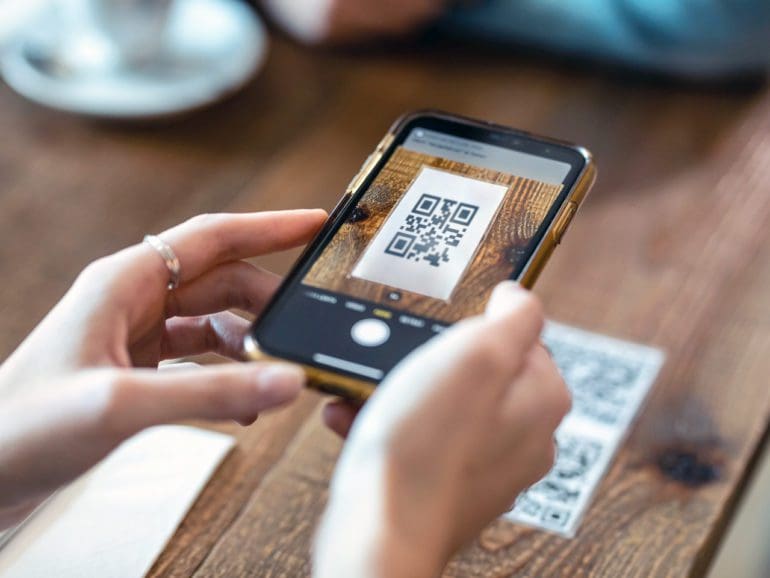When it comes to day-to-day business, cash is king in Latin America.
Most transactions continue to be done outside the financial system, in a region with a large informal workforce and banking ratios that can go as low as 40% in some of the biggest economies.
But in Latin America’s fast-growing digital space, Quick Response codes — a technology first introduced in Japan in the 1990s for other purposes — have quickly risen as a serious contender to cash and are now ubiquitous among restaurants, shops, and all kinds of merchants.
They are now one of the leading payment technologies for lower-end digital transactions and a powerful financial inclusion tool.
Linking analog and digital economies, QR codes can be used for various purposes. They can relay information when visiting a tourist spot or a museum or facilitate a digital menu when sitting at a restaurant. Also, they can be used on billboard posters on the subway to promote products and services.
Used more for transactions
In Latin America, they are also being massively used for settling digital transactions.
According to a private study, roughly six in every 10 digital payments in Argentina are done through so-called “QR” codes. In Brazil, the massive adoption of the low-cost payment system PIX enhances the use of QR codes for day-to-day payments.
Less than five years ago, rapid response QR codes were nowhere to be seen in most countries in Latin America. They were applied to very specific actions and had little mass range to speak of.
Grounded on an unparalleled adoption of smartphones, QR codes were introduced shortly after. According to a Mercado Libre 2021 report, three-quarters of a million transactions are settled every day.
The company, the largest e-commerce site in Latin America and a significant fintech player, first launched QR codes after a visit to China. By 2017, the technology was already thriving in Asia on the back of so-called super apps like WeChat and Alipay.
“Throughout history, Latin America has been marked by low financial inclusion in the formal system, (where other) payment methods such as checks did not have great cultural acceptance,” the report said. “Many factors came into play, but the key to picking QR as a new payment tool was speed and ease of use.”
Lower cost
Compared to other payments, QR code transactions can have a lower cost, making them attractive to merchants with no card infrastructure. They can be read by almost every smartphone and do not need the user to have a bank account to settle a payment.

“In terms of cost, deployment of a QR code is 10 times less for any kind of player than a point of sale device,” Sebastián Nuñez Castro, CEO at Geopagos, said. “The experience is dependable both for the merchant and the consumer, making the system less expensive.”
Skeptics of the QR technology have recurrently pointed out security issues stemming from these payments, yet many of those have been addressed by infrastructure providers.
Moreover, Latin Americas do not seem to care much about it.
A recent 2022 study by Mastercard showed that 86% of LatAm consumers used at least one emerging payment method in the past year.
“While 77% of Americans and 74% of Europeans prefer traditional payment methods to newer ones, Latinos are willing to use emerging methods such as biometrics, digital currencies, and QR codes,” according to the study.
Pix helping adoption
With Pix growing by leaps and bounds in Brazil, which allows for payments using QR technology, those will likely balloon this year.
“It’s a fast, secure, and easy way to make and receive payments for both merchants and payers,” Paulo Oliveira Andreoli, a fintech adviser in Brazil, said.
“Currently, it is common to see small merchants, street vendors, and even beggars with the QR code printed on a paper to receive payments.”
QR codes are now ubiquitous in many markets in Latin America, and fintechs use them as a gateway for initiating transactions. They are widely adopted by virtually all digital wallets, such as PicPay Mercado Pago and Nubank.
Related:
To be sure, the quick adoption of smartphones as well, enabled the growth of QR Codes. In Brazil alone, there are more smartphones than people, according to a report by the FGV think tank.
In a survey by Fiserv, PIX is the payment mechanism that Brazilians most expected to use shortly. Digital wallets and QR code payments came in second and third, respectively.
According to a study by Juniper Research, the size of Latin America QR code transactions could grow to $21.3 billion by 2025.
The number is still dwarfed by the Far East & China’s massive trillions-dollar market, yet it represents a meteoric growth from the $1.4 billion expected this year.
The study found that the LATAM region is expected to have overtaken Europe markedly in 2025.
Regulation key
Payment experts argue that central bank regulation is key to enhancing the user experience through interoperable codes. This way, QRs are no longer restricted to just one player but can accept multiple wallets.
In any case, numerous use cases are still being shaped. This month, the country’s Electric Energy Agency issued a public consultation to make the inclusion of Pix mandatory as a payment option in electricity bills.
“In the coming years, we will see QR codes on more utility bills, tax payments, and telephone company statements,” Andreoli said. “Despite being widely used, QR codes still have huge growth potential.”


